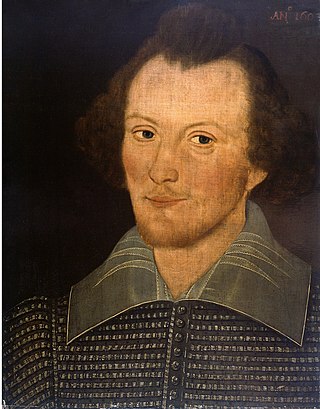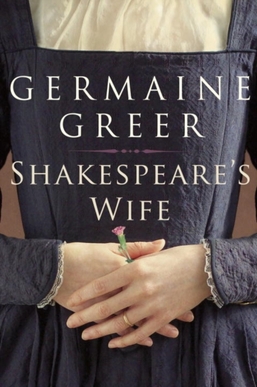
Christopher Marlowe, also known as Kit Marlowe, was an English playwright, poet, and translator of the Elizabethan era. Marlowe is among the most famous of the Elizabethan playwrights. Based upon the "many imitations" of his play Tamburlaine, modern scholars consider him to have been the foremost dramatist in London in the years just before his mysterious early death. Some scholars also believe that he greatly influenced William Shakespeare, who was baptised in the same year as Marlowe and later succeeded him as the preeminent Elizabethan playwright. Marlowe was the first to achieve critical reputation for his use of blank verse, which became the standard for the era. His plays are distinguished by their overreaching protagonists. Themes found within Marlowe's literary works have been noted as humanistic with realistic emotions, which some scholars find difficult to reconcile with Marlowe's "anti-intellectualism" and his catering to the prurient tastes of his Elizabethan audiences for generous displays of extreme physical violence, cruelty, and bloodshed.

William Shakespeare was an English playwright, poet and actor. He is widely regarded as the greatest writer in the English language and the world's pre-eminent dramatist. He is often called England's national poet and the "Bard of Avon". His extant works, including collaborations, consist of some 39 plays, 154 sonnets, three long narrative poems and a few other verses, some of uncertain authorship. His plays have been translated into every major living language and are performed more often than those of any other playwright. Shakespeare remains arguably the most influential writer in the English language, and his works continue to be studied and reinterpreted.

Corpus Christi College is a constituent college of the University of Cambridge. From the late 14th century to the early 19th century it was also commonly known as St Benet's College.

The Tragical History of the Life and Death of Doctor Faustus, commonly referred to simply as Doctor Faustus, is an Elizabethan tragedy by Christopher Marlowe, based on German stories about the title character Faust. It was probably written in 1592 or 1593, shortly before Marlowe's death. Two different versions of the play were published in the Jacobean era several years later.

Anne Shakespeare, commonly known as Anne Hathaway, was the wife of William Shakespeare, an English poet, playwright and actor. They were married in 1582, when Hathaway was 26 years old and Shakespeare was 18. She outlived her husband by seven years. Very little is known about her life beyond a few references in legal documents. Her personality and relationship to Shakespeare have been the subject of much speculation by many historians and writers.

The English Renaissance was a cultural and artistic movement in England during the late 15th, 16th and early 17th centuries. It is associated with the pan-European Renaissance that is usually regarded as beginning in Italy in the late 14th century. As in most of the rest of Northern Europe, England saw little of these developments until more than a century later within the Northern Renaissance. Renaissance style and ideas were slow to penetrate England, and the Elizabethan era in the second half of the 16th century is usually regarded as the height of the English Renaissance. Many scholars see its beginnings in the early 16th century during the reign of Henry VIII. Others argue the Renaissance was already present in England in the late 15th century.

Trunch is a village and parish in Norfolk, England, situated three miles north of North Walsham and two miles from the coast at Mundesley. At the Census 2011 the village had a population of 909. The parish covers an area of 5.5 square kilometres (2.1 sq mi).

The Portrait of a Musician is an unfinished painting by the Italian Renaissance artist Leonardo da Vinci, dated to c. 1483–1487. Produced while Leonardo was in Milan, the work is painted in oils, and perhaps tempera, on a small panel of walnut wood. It is his only known male portrait painting, and the identity of its sitter has been closely debated among scholars.
Calvin Hoffman, born Leo Hochman in Brooklyn, New York, was an American theater critic, press agent and writer who popularized in his 1955 book The Man Who Was Shakespeare the Marlovian theory that playwright Christopher Marlowe was the actual author of the works attributed to William Shakespeare. Like other alternate Shakespearean authorship theories, Hoffman's claims have been largely dismissed by mainstream Shakespearean scholars.

The Marlovian theory of Shakespeare authorship holds that the Elizabethan poet and playwright Christopher Marlowe was the main author of the poems and plays attributed to William Shakespeare. Further, the theory says Marlowe did not die in Deptford on 30 May 1593, as the historical records state, but that his death was faked.
Thomas Drury was a British government informer, messenger and swindler, who is noted for having been one of the main people responsible for accusations of heresy, blasphemy, and seditious atheism on the part of the Elizabethan playwright Christopher Marlowe given to the Privy Council in May 1593. Within a couple of weeks, Marlowe, just 29 and the same age as William Shakespeare, but one of the single greatest influences upon his work, was dead.
John Leslie Hotson was a scholar of Elizabethan literary puzzles.

No contemporary physical description of William Shakespeare is known to exist. The two portraits of him that are the most famous are the engraving that appears on the title-page of the First Folio, published in 1623, and the sculpture that adorns his memorial in Stratford upon Avon, which dates from before 1623. Experts and critics have argued that several other paintings from the period may represent him, and more than 60 portraits purporting to be of Shakespeare were offered for sale to the National Portrait Gallery within four decades of its foundation in 1856, but in none of them has Shakespeare's identity been proven.
Eleanor Bull was an English woman, known for owning the establishment in which Christopher Marlowe, the Elizabethan playwright and poet, was killed in 1593.
Nicholas Skeres was an Elizabethan con-man and government informer—i.e. a "professional deceiver"—and one of the three "gentlemen" who were with the poet and playwright Christopher Marlowe when he was killed in Deptford in May 1593. Together with another of the men there, Robert Poley, he had played a part in the discovery of the Babington plot against the life of the Queen in 1586, and at the time of Marlowe's death was engaged in a money-lending swindle with the third of them, Marlowe's reported killer Ingram Frizer.

The Cobbe portrait is an early Jacobean panel painting of a gentleman which has been argued to be a life portrait of William Shakespeare. It is displayed at Hatchlands Park in Surrey, a National Trust property, and the portrait is so-called because of its ownership by Charles Cobbe, Church of Ireland (Anglican) Archbishop of Dublin (1686–1765). There are numerous early copies of the painting, most of which were once identified as Shakespeare.

The Ashbourne portrait is one of several portraits that have been falsely identified as portrayals of William Shakespeare. At least 60 such works had been offered for sale to the National Portrait Gallery in the 19th century within the first forty years of its existence; the Ashbourne portrait was one of these. The portrait is now a part of the collection of the Folger Shakespeare Library in Washington, DC.
Robert Poley, or Pooley was an English double agent, government messenger and agent provocateur employed by members of the Privy Council during the reign of Queen Elizabeth I; he was described as "the very genius of the Elizabethan underworld". Poley is particularly noted for his central role in uncovering the so-called Babington plot to assassinate the Queen in 1586, and for being a witness of, and even a possible party to, the reported killing in self-defence by Ingram Frizer of the famous poet/dramatist Christopher Marlowe in May 1593.

The Sanders portrait is reputed to be one of the few images of William Shakespeare done in his lifetime. It features a middle-aged man wearing a black doublet with silver ornamentation. It also has a label affixed to the back which reads:
Shakspere [sic]
Born April 23=1564
Died April 23-1616
Aged 52
This Likeness taken 1603
Age at that time 39 ys

Shakespeare's Wife is a book by feminist academic Germaine Greer which was first published in 2007 by Bloomsbury. The book is a biography of Anne Hathaway, the wife of English poet and playwright William Shakespeare who was born in Shottery, a former small village within Stratford-upon-Avon. At the time of its publication, very little was known about Hathaway with most information being sourced from historic legal documents. Greer, in addition to discussing the content of Hathaway's life, also outlines various aspects of a provincial Elizabethan woman's life as a means to understand the lifestyle she likely led.















